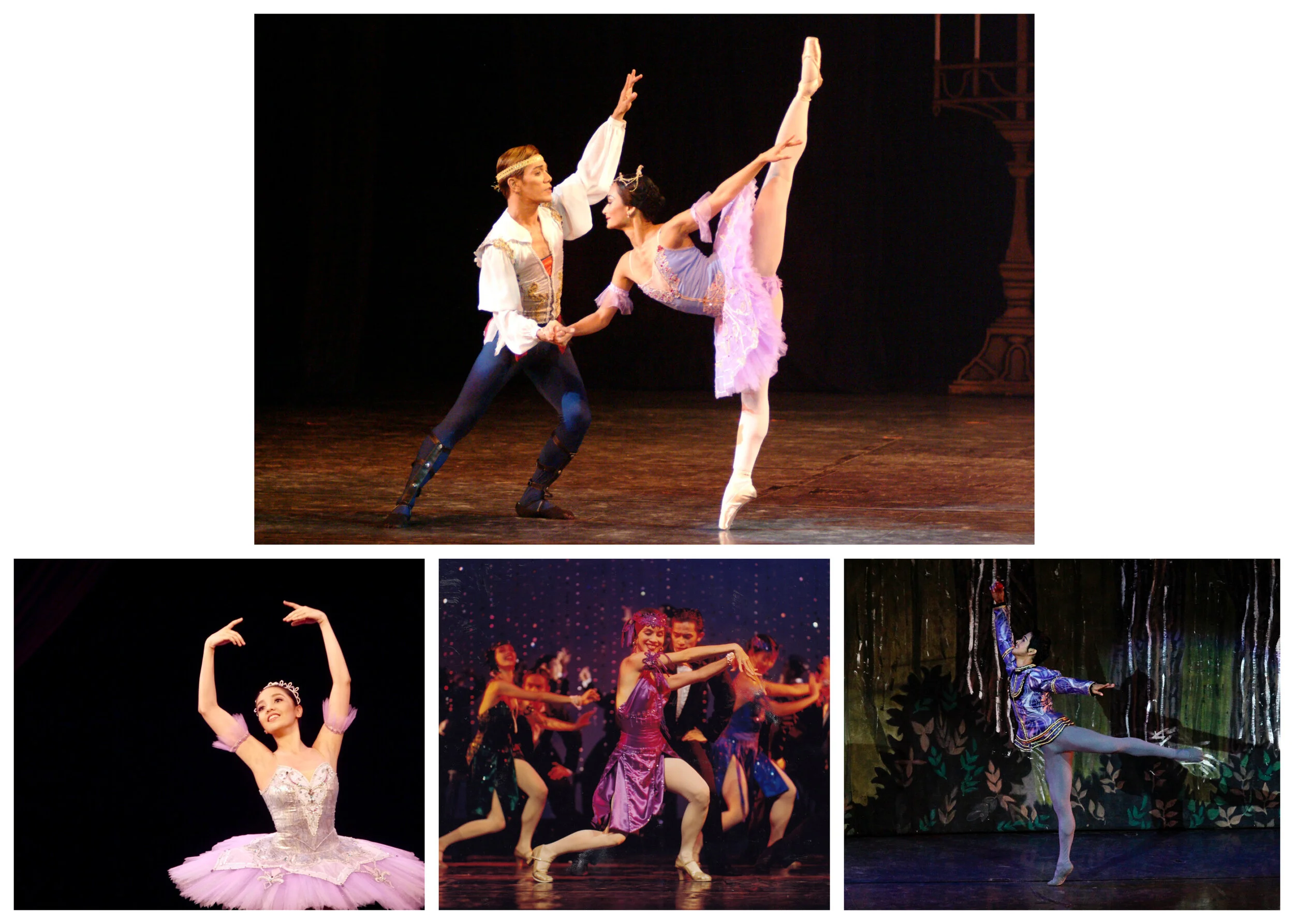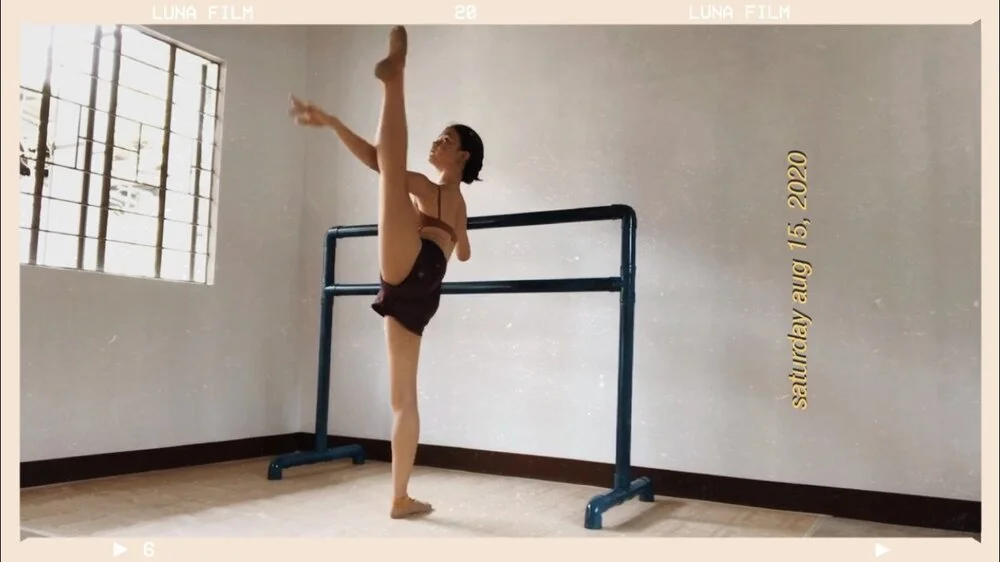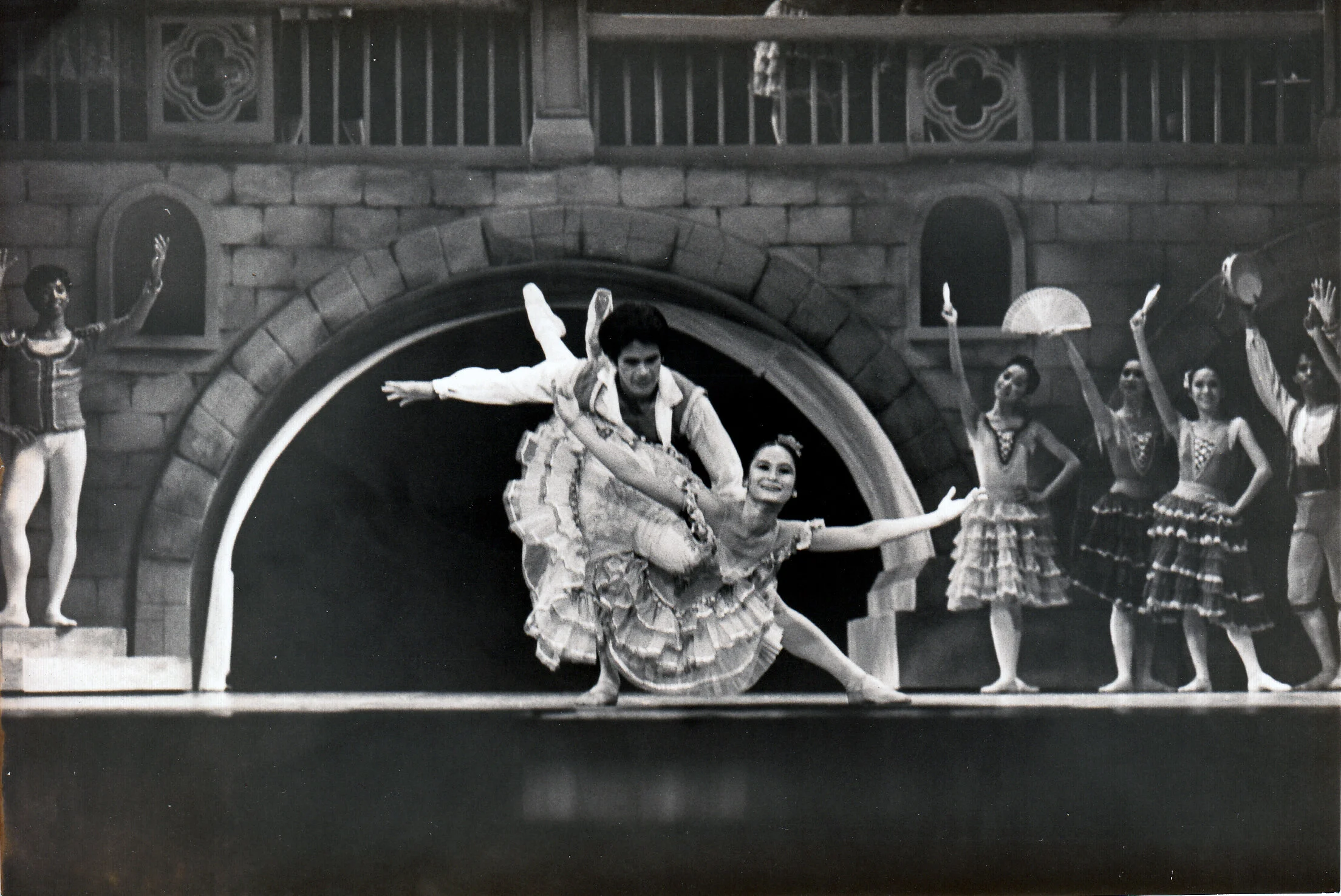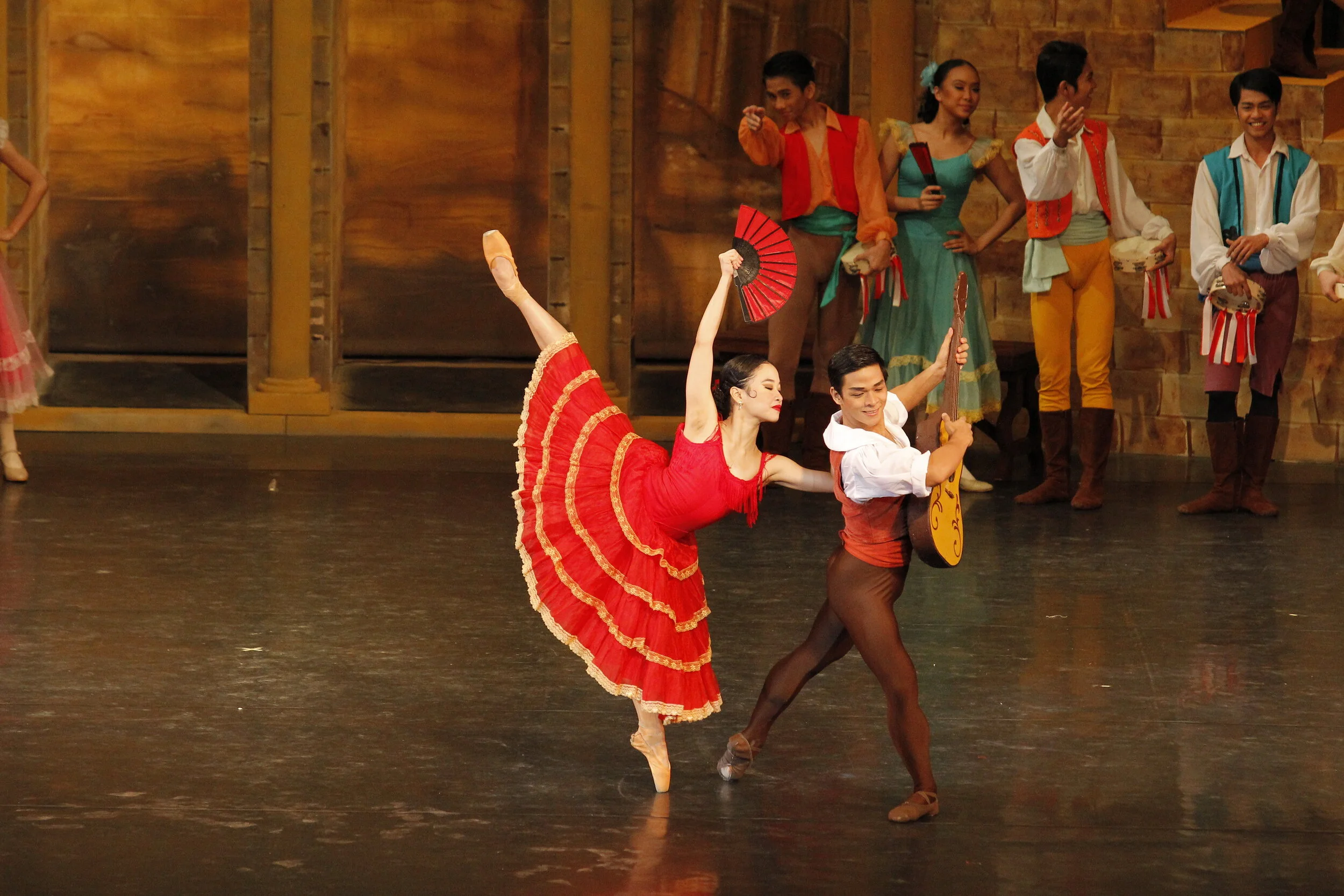Don Quixote: The dreamy trio of Dulcinea, Amour and the Queen of the Dryads
The dream sequence in Don Quixote’s Act 2 includes the Queen of the Dryads, a role that has been performed by (clockwise from top): Joan Emery Sia (2017), Sarah Abigail Cruz (2006), Violet Hong (2017), and Zaira Cosico (2009). Photos by Ocs Alvarez
The triumph of young love is at the heart of Don Quixote the ballet. But while all eyes are focused on the leads Kitri and Basilio, it also includes in its cast several interesting characters that have allowed choreographers to showcase different techniques. In this ballet based on the book written by Spanish novelist Miguel de Cervantes, the roles of Dulcinea, Amour, and the Queen of the Dryads best fit this category.
All three characters figure prominently in the second act where, after attacking windmills that he mistakes for various monsters, a wounded Don Quixote falls asleep and dreams of his beloved Dulcinea. She is surrounded by Amour, the Queen of the Dryads and her fairies.
In 1999, Lisa Macuja-Elizalde (bottom) was Dulcinea to the Amour of Pamela Asprer (top left) and the Queen of the Dryads of Aileen Gallinera (top right). Whoever among them was not dancing as Kitri in a particular show would take on the “vision/apparition” version of Dulcinea. Photo by Ocs Alvarez
In Marius Petipa’s 1869 version of Don Quixote, the dream sequence is known as The Enchanted Garden of Dulcinea.
When Alexander Gorsky created his version, however, this scene was vastly reimagined. He added the three variations that have become signature pieces in classical ballet: Variation of the Queen of the Dryads, Variation of Amour, and Variation of Dulcinea.
The Queen of the Dryads was solely the creation of Gorsky. The character did not exist in any of the earlier versions of the ballet. The music to her variation was composed by Anton Simon.
The Variation of Amour was composed by Vassily Barmin. It was originally created for a performance of Paquita by Varvara Nikitina and is now being danced in the Grand Pas Classique.
And finally, the Variation of Dulcinea was composed by Ricardo Driggo. The piece was originally performed by Elena Cornalba in The Vestal (1888).
As part of her Swan Song Series in 2012, Lisa Macuja-Elizalde (left) said farewell in Don Quixote not just to Kitri but to Dulcinea, with her daughter Missy Elizalde as Amour (bottom right) and Dawna Reign Mangahas (top right) as Queen of the Dryads. Photos by Jojo Mamangun
It may seem odd that Dulcinea, the object of Don Quixote’s affection and the reason behind all his adventures, was relegated to a minor character. But the title role has taken a back seat to the young lovers so this development was not surprising. She is, however, one of the few named characters in the ballet from the beginning. She was performed by Pelageya Karpakova in Marius Petipa’s first version in 1863, Alexandra Vergina in 1871, and Mathilde Kschessinska in 1902.
In Petipa’s original version, Kitri and Dulcinea were performed by different dancers and the former was thought to be a protegeé of Don Quixote rather than being mistaken for the love of his life. To clear the confusion, he turned it into a dual role instead with the title character clearly hallucinating that Kitri was his beloved Dulcinea. This change became a standard for future productions. And while other choreographers would use a different dancer covered with a veil to represent Dulcinea as an apparition/vision of Don Quixote, the ballerina dancing the Variation of Dulcinea is always the same ballerina performing as Kitri.
Dulcinea, the object of Don Quixote’s affection, has been danced by (clockwise from top left): Lisa Macuja Elizalde (2006), Jasmine Pia Dames (2017), Dawna Reign Mangahas (2017), and Mylene Aggabao (2009). Photos by Ocs Alvarez
At Ballet Manila, Aileen Gallinera and Elline Damian alternated as the Queen of the Dryads in the company’s earlier productions of Don Quixote. Pamela Asprer and Sandra Lynn Huang would alternate as Amour. And whoever among the three Kitris would not be performing the main role that day – prima ballerina Lisa Macuja-Elizalde, Pamela Asprer or Aileen Gallinera – would take on the “vision/apparition” version of Dulcinea.
Eventually, the roles were passed on to the next generation of dancers. Dulcinea, on top of the lead role of Kitri, has also been danced by Mylene Aggabao, Dawna Reign Mangahas and Jasmine Pia Dames. Those who have performed as Queen of the Dryads include Sarah Abigail Cruz, Zaira Cosico, Gabriella Galvez, Violet Hong, and current principal dancer Joan Emery Sia.
Ballerinas who have taken on the role of Amour include Yanti Marduli, Patricia Hermosa, Marian Faustino, Tiffany Chiang-Janolo, Jessa Balote, and current soloist Jessica Pearl Dames.
Amour, the personification of love, has been danced by (clockwise from top left): Jessica Pearl Dames (2017), Jessa Balote (2017), Yanti Marduli (2006), and Tiffany Chiang-Janolo (2009). Photos by Ocs Alvarez
In the 2012 production of Don Quixote, for Lisa Macuja-Elizalde’s Swan Song Series, Dawna Reign Mangahas was Queen of the Dryads while Lisa’s daughter Missy Elizalde was Amour.
The role of Amour was particularly memorable for Tiffany. Amour was the first role given to her right after she signed a contract with Ballet Manila for the first time. After a long journey to become a ballet dancer, dancing Amour with BM felt right, and it changed her life.
Indeed, minor roles done right have the power to alter one’s life. As the roles themselves continue to evolve with a different choreographer’s approach, the Queen of the Dryads, Amour and Dulcinea will be changing the lives of many ballerinas in the future.







